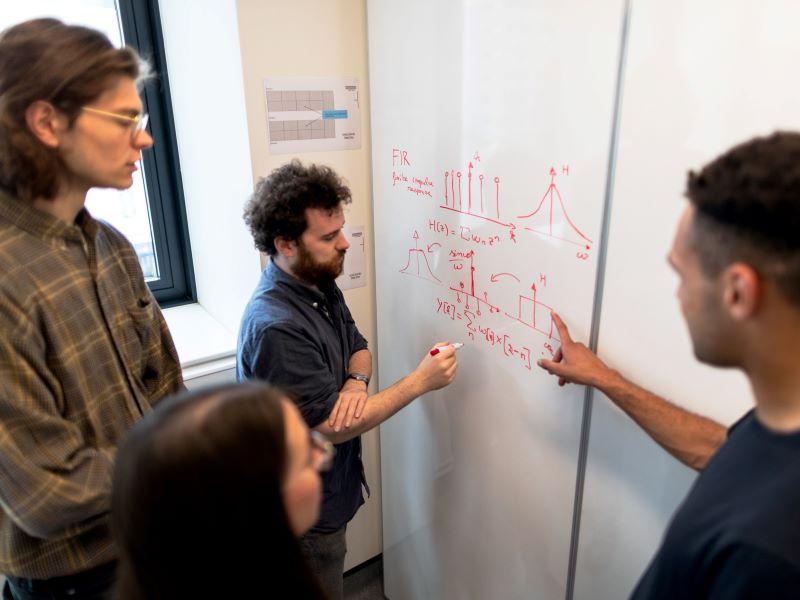
Tactics to ensure students engage with and learn from feedback
Students in the UK are generally very satisfied with the teaching on their courses (80 per cent), the learning opportunities (79 per cent), the academic support (74 per cent), and the learning resources (81 per cent), according to the National Student surveys for 2022 and 2021.
Noticeably lower are the rates of positive answers for assessment and feedback, at only 69 per cent. Of the teaching-related criteria, this is the lowest scoring area, but many lecturers spend a huge amount of time providing detailed and constructive feedback. So why are students not feeling it?
In my experience, there are several challenges associated with students making full use of feedback; here are my approaches to tackling them.
Show students they can apply feedback to their next assignment
I have added a feedback-focused assessment item to my first-year Skills for Biologists module. For this module, students write a summative essay in the first semester and complete a portfolio in the second semester. For the first task in the portfolio, students are asked to paste the feedback they received into their portfolio and write a short paragraph reflecting on the assignment, their approach to it, how they felt about the feedback, and specifically what they would do differently in their next essay. There is a section of the lecture specifically showing the students where to click to access each bit of feedback. Incentivising students to engage with their feedback and to pull out specific comments and translate them into future actions ensures that almost all students will read their feedback. Hopefully, having written down a planned action, students will commit to it, as evidence shows that goals are more likely to be achieved if they are written down.
- THE Campus spotlight: Designing assessments to support deeper learning
- Why you should write feedback to your students before they’ve submitted
- Making feedback effective for your students and efficient for you
Emphasise the need to read and reflect on feedback
If you use a submission technology that allows you to see when students access their feedback, you’ll see that many students do not even open their coursework once it has been marked; they take the mark and move on. Another group may open the coursework but miss key elements of feedback. For instance, in my module, feedback is provided as notes directly on the document, a summary paragraph and a marking rubric, but very few students see all three forms of feedback.
A benefit of adding the feedback reflection task to my portfolio was that students had to read their feedback to complete their next summative assignment. The proportion of students opening their coursework after marking increased from 65.3 to 98.5 per cent. By offering marks for identifying exactly what they would do differently in their next essay, we can guide students to see feedback as constructive and broadly applicable rather than relevant only to a specific essay.
Try to make it clear that it’s tailored to their submission
An alternative approach to written feedback that seems to be very popular with the students is voice notes. Students find this approach more personal and seem to appreciate the sense of connection they receive with lecturers and their coursework. If you are disciplined and can keep them to a minute or so, voice notes are a much quicker way to provide feedback; very long voice notes are not particularly helpful for either you or the student. They are also especially good for smaller modules but can become tiresome to do for larger cohorts. It’s also important to consider students with hearing impairments or language barriers and perhaps offer to transcribe your voice note on request or point to transcription software.
If you are writing your feedback comments, consider using examples, so the students feel that you have responded specifically to their assignment. For example, instead of: “Good colour choice”, you could write: “The red and blue are great!”
Some students feel negatively about criticism
Feedback is inherently criticism, however constructive it may be. There should always be some way in which a student could elevate their work to a higher level, so that they continue to learn and progress. However, many students who experience anxiety or low self-esteem can find it quite challenging to receive constructive feedback and interpret it in a constructive way. For this reason, it is important to make it clear to students in advance what they can expect from feedback. We try to stick to a template for our general feedback, including a “what was particularly good” section and “what your main priority is to work on for your next assignment”. This way, whatever the comments on the script say, the overview gives a compliment and boost followed by a clear call to action to improve.
In the comments on the script, avoid highlighting the same issue more than twice. If a student has made a mistake, they will learn this from the first comment about it. If it’s a very important mistake, a second reminder comment can make it hit home. However, multiple comments highlighting identical errors leave students feeling frustrated, as if they’ve only received feedback on one minor error. It is easy to fall into this habit when marking, but it does not help the student.
Ideally, feedback should be a discussion
This year, the changes to our assessment patterns have resulted in a discursive feedback loop. This is difficult in a module with more than 200 students but has been worthwhile.
The first formative assessment that students submit for my module is a plan for their essay, as well as a sample paragraph including references. I then provide feedback on referencing, writing style, planned structure and planned content.
From this point, students can use that feedback to inform how they write and structure their essay. The essay is marked and includes lots of feedback: as a rubric, comments on the essay and as a summary statement highlighting the student’s strengths and a weakness that will make the most difference if they improve it in their next essay.
The students then have a task to reflect on this feedback, including whether they were surprised by anything said, how it made them feel and, most importantly, what they will do differently next time they write an essay. The final part of the discussion is us responding to this reflection. The students are always encouraged to contact us if they are unhappy with their feedback, or do not understand, but they rarely do. However, the reflection task can provide opportunities for us to clarify points of contention rather than leaving students feeling misunderstood.
In a smaller module, we are going to trial live feedback. We will set up 10-minute sessions with every student to read and discuss their draft coursework with them there. This links to personalised feedback as well as encouraging students to assess which areas of their coursework they’d like the most guidance on.
Becky Lewis is a lecturer at the University of East Anglia.
If you found this interesting and want advice and insight from academics and university staff delivered direct to your inbox each week, sign up for the THE Campus newsletter.




